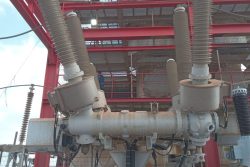
In today’s article, we examine NAFTA’s provisions, its achievements so far, and the merits or otherwise of its criticisms. We will then review the contents of USMCA to ascertain the changes that have been made, and their implications for future trade between the United States, Mexico and Canada. Perhaps, there are important lessons to be learned for any review and possible amendment to CARICOM Single Market and Economy (CSME) of which Guyana is part. The CSME is being implemented in a number of phases and involves mainly free movement of skills/labour, goods, capital and services as well as the right to establish businesses. A key outcome of the CSME is the establishment of the Caribbean Court of Justice.
NAFTA in perspective
The Canada-United States Automobile Products Agreement (‘Auto Pact’) was entered into in 1965 to boost trade between the two countries. Since then, 90 percent of Canada’s auto production was sold to the United States while a similar percentage of Canada’s consumption was from the United States, an indicator of the level of integration of the two economies in automobile manufacture. The Agreement was particularly advantageous to Canada since it enabled the country to modernize its auto industry.
During the 1980s and early 1990s, several developments took place that adversely affected the economies of the United States, Mexico and Canada, including the 1980-1982 recession, the 1987 Stock Market Crash and another recession in 1990-1991, albeit milder. These and other developments prompted intense debate on free trade as a means of improving the economic performance of these countries. As a result, the Canada-United States Free Trade Agreement (CUSFTA) was entered into in 1988. Free trade was extended to Mexico in 1994 with the signing of NAFTA. At the time when it was negotiated, NAFTA enjoyed strong political backing from the countries’ leadership as well as bi-partisan support from U.S. lawmakers.
At the beginning of 1994, the combined economies of the United States, Canada and Mexico accounted for more than 25 percent of the world’s GDP. This made NAFTA the largest free-trade agreement and first between economies at different stages of development, highlighting the challenges that lay ahead in terms of successful implementation. In particular, Mexico’s GDP per capita at the time was one-fifth that of the United States, and various protectionist measures were in place to encourage domestic participation in Mexico’s economy and to prevent foreign domination. Under Mexican law, one third of Mexico’s economy was closed to foreign participation. With NAFTA, tariffs and other trade barriers were either eliminated or progressively removed. In this way, the Parties are able to gain greater access to each other’s markets, and trade has tripled over the years.
Main objectives of NAFTA
The main objectives of NAFTA are to:
(a) Eliminate all trade barriers, including removal of restrictions on cross-border movement of goods and services;
(b) Promote fair competition within the free trade area;
(c) Increase investment opportunities;
(d) Protect and enforce intellectual property rights;
(e) Provide mechanisms to implement and apply the Agreement, including the resolution of disputes; and
(f) Establish a framework for greater cooperation among the NAFTA members as well as for regional and multilateral cooperation.
These objectives are reinforced in the Preamble to the Agreement which identifies the following key desirable goals: (i) creating new employment opportunities; (ii) providing improved working conditions and standards of living; (iii) promoting, safeguarding and enforcing workers’ rights; (iv) safeguarding the public welfare; (v) fostering creativity and innovation; (vi) protecting and preserving the environment; and (vii) promoting sustainable development.
NAFTA’s key provisions
NAFTA contains 22 chapters and seven annexes, covering the following key areas: (i) goods and services; (iii) technical barriers to trade; (iii) government procurement; (iv) investment services and related matters; (v) intellectual property; and (vi) administrative and institutional provisions, including dispute settlements. There are also two supplementary agreements relating to labour and the environment.
Goods and services
Prior to NAFTA, the average Mexican tariff on U.S. imports was 10 percent, in addition to non-tariff barriers. On the other hand, the U.S. tariff on imports from Mexico averaged 2.07 percent, and over 50 percent of imports from Mexico entered the United States duty-free. The latter was based on the Generalised System of Preferences (GSP) aimed at assisting the economies of developing countries by providing preferential access to U.S. markets for certain products. Canada’s average tariff on U.S. goods was a mere 0.37 percent.
The key provisions of NAFTA relate to the elimination of tariffs on goods satisfying certain requirements and the progressive elimination of customs duties over a 15-year period, as per the various schedules in the Agreement. In addition, state, local and provincial governments are precluded from imposing tariffs or taxes on goods produced within the Parties’ territories. The main focus of the Agreement, however, is on automobile manufacture, textile and agricultural products.
Prior to 1994, the following tariffs were applied to U.S. auto imports from Mexico: 2.5 percent on automobiles; 25 percent on light-duty trucks; and 3.1 percent on automobile parts. On the other hand, Mexican tariffs on auto imports from the United States and Canada were 20 percent on automobiles and light trucks; and 10-20 percent of automobile components. Under NAFTA, these tariffs are either removed or phased out over time. To qualify for duty-free movement, at least 62.5 percent of the components of certain vehicles has to be manufactured in North America. For other vehicles and automobile parts, the figure is 60 percent. There is no specified minimum wage per hour for workers involved in manufacture of automobile parts.
For agricultural products, all tariffs and quotas are removed or eliminated over time. Sanitary and other related measures are to be taken; and rules of origin, and grade and quality standards are to be implemented. For Canada, the Agreement excludes dairy, poultry and eggs; while for the United States, the exclusion relates to dairy, sugar, cotton, tobacco, peanuts and peanut butter.
In relation to the textile industry, there are detailed requirements for determining rules of origin. These are to ensure that most of the production occurs within the NAFTA region in order to qualify for tariff exemption. However, certain imported raw material would qualify for preferential treatment if they are used in a significant way to produce finished products within the Region.
Non-tariff barriers were to be eliminated by 2008, especially border processing and licensing requirements. As a result of both tariff and non-tariff measures, about 50 percent of the U.S.-Mexican trade became duty-free, compared with the pre-NAFTA period when tariffs were as high at 12 percent.
Technical barriers to trade
All technical barriers to trade are to be removed, and standards relating to health and safety, consumer protection and the environment are to be implemented. International standards are to be adopted, and the importation of goods and services that do not meet the specified standards is prohibited.
Government contracts
NAFTA removes all restrictions to enable firms in each other’s territory to bid for government contracts above certain thresholds, as follows:
For Federal Government $50,000 for the procurement of
goods/services; and $6.5 million
for the execution of works
For government agencies $250,000 for the procurement of
goods/services; and $8 million for
works
For State/Provincial Government As set out in the related annex.
Procurement contracts are not to be designed or structured to avoid the application of these thresholds, and the tendering and competitive bidding procedures must be such that they do not discriminate against firms in another Party’s territory. Other provisions include qualifications of suppliers/contractors, invitation to bid, various forms of tendering, tender documentation, opening and assessment of tenders, contract award, and bid challenge.
Investment services and related matters
NAFTA provides for expanded cross-border trade in various professional services, such as finance, insurance, telecommunications and consulting. Individuals and firms from each Party’s territory are to be treated no less favourably in the offer of their services, and quantitative restrictions are to be assessed periodically and progressively phased out. Residency requirements are also to be removed, and professional standards adopted for licensing and certification of service providers.
Intellectual property
NAFTA is the first free trade agreement that contains detailed provisions on intellectual property rights. The Parties are to provide adequate and effective protection and enforcement of intellectual property rights mainly in relation to copyright, trademarks, patents and industrial designs. As a minimum, they must adhere to the key provisions of the following international conventions:
(a) Geneva Convention for the Protection of Producers of Phonograms Against Unauthorized Duplication of their Phonograms;
(b) Berne Convention for the Protection of Literary and Artistic Works;
(c) Paris Convention for the Protection of Industrial Property; and
(d) International Convention for the Protection of New Varieties of Plants.
In terms of copyright, where protection is not calculated on the basis of the life of the author, the term is not less than 50 years from the date of first publication.
Administrative and institutional provisions
Each Party is to designate points of contact for communication regarding matters covered by the Agreement. All related laws, regulations, procedures and administrative rulings are to be published or otherwise made available to interested parties, including notification of any proposed changes.
Dispute settlements
Disputes may arise from time to time in the implementation of NAFTA’s provisions. Instead of resorting to litigation, the Agreement provides for the resolution of such disputes using the arbitration method. Arbitrators are selected from a roster of individuals with expertise and experience in law and international trade. Once appointed to adjudicate on a dispute, the arbitrators have specified deadlines within which to conclude their work and to make a ruling or to issue a report of their findings and recommendations. The dispute resolution provisions relate mainly to investments; administrative actions to implement the Agreement; and final anti-dumping and countervailing duties imposed by the Investigating Authorities.
A Free Trade Commission is to be established to provide mediation services in an attempt to bring about a settlement on the interpretation and implementation of the provisions of the Agreement.
Labour and the environmental matters
Critics of NAFTA point to the likelihood of a shift in production to Mexico because of that country’s low wages, and to the adverse effects Mexico’s increased industrialization might have on the environment. Environmental groups contended that the measures contained in NAFTA were inadequate to protect and conserve the environment. In particular, Mexico’s regulatory and legislative frameworks on the environment were inadequate.
To address these concerns, two side agreements – the North American Agreement on Labor Cooperation (NAALC); and the North American Agreement on Environmental Cooperation (NAAEC) – were entered into at the same time NAFTA came into force, requiring the Parties to set up commissions to deal with labour and environmental issues and to impose fines for the failure to have laws and regulations in place.
NAALC sets out guiding principles and detailed procedures relating to freedom of association and protection of the right to organize; right to bargain collectively; right to strike; prohibition of forced labour; labour protections for children and young persons; minimum employment standards; elimination of employment discrimination; equal pay for men and women; compensation for occupational injuries and illness; and protection for migrant workers.
Similarly, NAAEC outlines detailed principles and procedures for, among others, conserving and protecting the environment; promoting sustainable development; promulgating and enforcing environmental laws, regulations, procedures, policies and practices; and promoting pollution prevention policies and practices. Other provisions include public reporting on the state of the environment; developing and reviewing environmental emergency preparedness measures; and conducting environmental impact assessments as necessary.
Committees/working Groups
Committees and working groups are to be established to monitor the implementation of various aspects of the Agreement and to make recommendations for any modifications. These include committees on trade in goods; worn clothing; rules of origin; agriculture; sanitary and phytosanitary matters; small business; standards-related measures; financial services Committee; and trade and competition.
Criticisms of NAFTA
Critics argue that NAFTA was influenced by large multinational corporations in pursuit of higher profits thereby undermining U.S. jobs and manufacturing capability through the relocation of factories in Mexico and the use of cheaper Mexican labour. Other criticisms are that NAFTA:
(a) Contributed significantly to the recorded trade deficit with Canada and Mexico;
(b) Encourages privatization and deregulation;
(c) Undermines the ability of local governments to protect the public interest by prohibiting them from imposing taxes and tariffs on traded goods and services;
(d) Discourages and displaced small and medium-scale farming; and
(e) Provides inadequate safeguards against environmental degradation and safety standards, given Mexico’s lack of experience in these areas.
To be continued –






